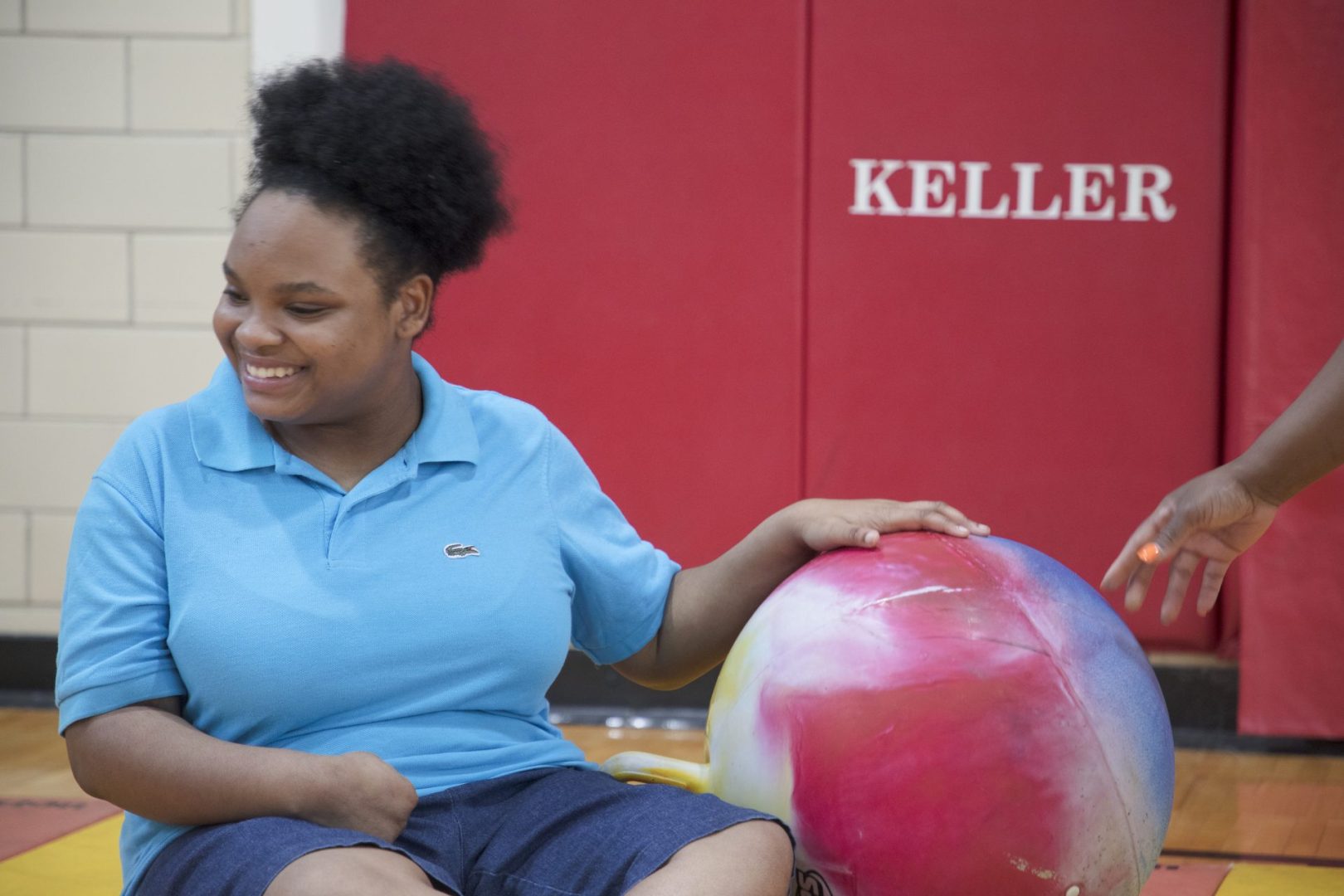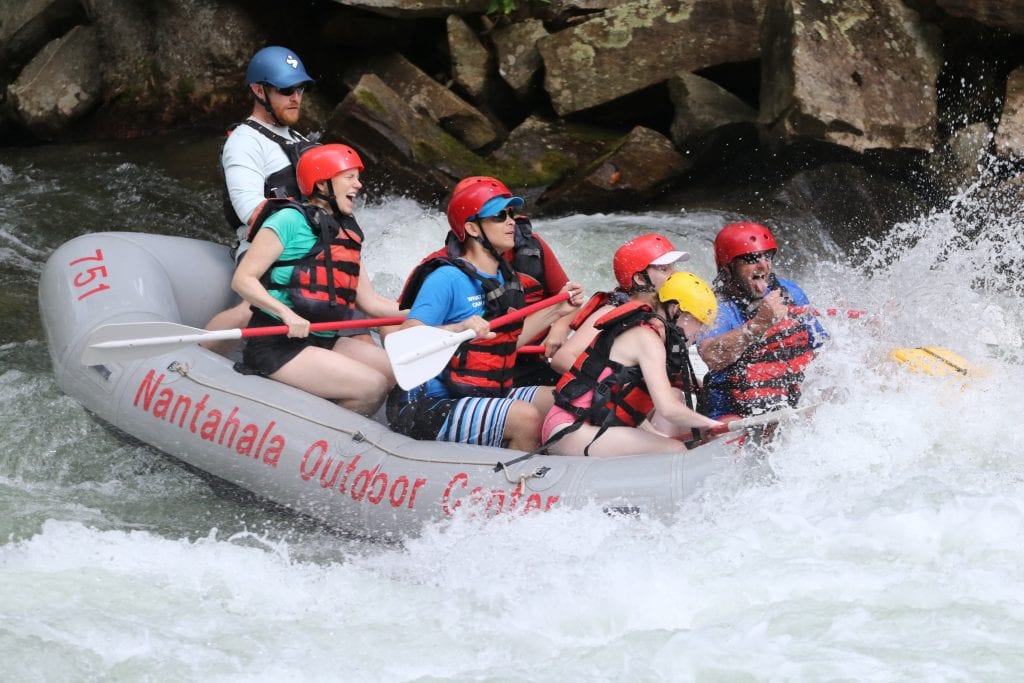Please be advised USPS is experiencing unusually long delays for Free Matter For The Blind shipping. If you have not received an order placed more than 30 days prior, please contact the APH Customer Service team at support@aph.org or 1-800-223-1839.
CloseAdaptive Physical Education: Enhancing Inclusivity for Blind and Low Vision Students: Creating Inclusive P.E. Environments

In public schools, when there are a limited number of students who are blind or low vision, adapted P.E. classes aren’t typically offered. We interviewed APH Outreach Specialist and Teacher of the Visually Impaired (TVI), Erin Weaver, and APH Engagement Specialist and Paralympian, Amanda Dennis, about their time in a mainstream gym class and how to make these courses accessible for all.
Meeting with Teachers and Parents
In TVI Erin Weaver’s experience, it is best to meet with parents at the beginning of each school year to discuss a student’s individual needs. Teachers and parents can discuss the student’s eye condition and if they have any concerns about the student participating in P.E. class. In some cases, students may have participation limitations as a blow to the head could adversely impact their eyesight, while others will/may choose to wear protective eye goggles during class to ensure safety. After the initial meeting with parents, teachers often make a plan for further communication. Depending on the parents’ preference, students may have a notebook that goes back and forth from school. Other times, the parents have a set time they meet with teachers in person or over the phone, while some parents may contact them on an as-needed basis.
Erin also discusses student accommodations with teachers as a group and individually during an in-service day at the beginning of the school year. The equipment and individual needs of each student are recorded in the student’s individualized education program (IEP), which the P.E. teacher utilizes throughout the year. The TVI then has built-in bi-weekly or monthly meetings with the P.E. teacher about upcoming units or any in-class concerns.
Erin said, “I have a plethora of strategies and ideas for adaptive materials that I show teachers, and once I’ve explained a few things, they’re so excited. I work with them, and I work with the paraeducator so they can competently assist while in P.E. Then we watch our students go from sitting on the sidelines to full participation in class. That’s been super exciting.”
Familiarizing Students with the Gym
Before the course starts, Erin suggests creating a tactile representation of what the gym looks like on APH’s Tactile Town or Picture Maker Wheatley Tactile Diagramming Kit so students can feel the layout of the gym. She suggests walking the perimeter and the interior of the gym with students to explain the space in terms of cardinal directions i.e., the north, south, east, and west walls. The TVI can also put tactile markers on the floor for the student to feel. For example, a rope could be taped to the floor of the basketball court, so the students know they are approaching boundary lines. If students have a designated place on the bleachers or spot they sit in at the start of each class, they need to be shown this location. Erin often puts class materials that the P.E. teacher sends her on the student’s spot in their preferred reading format, either braille or large print.
Strategies for Adapting Physical Education Classes
Erin does a lot of pre-teaching before each P.E. unit so blind or low vision students can come in ready to participate alongside their peers. A week before the unit starts, Erin receives vocabulary words and a draft of lesson plans from the P.E. teacher. She introduces these words to the student and teaches them the techniques taught in that unit. For example, if the class is learning how to skip, Erin will use a model figurine to show the student what skipping looks like. She will allow the student to feel her arm and foot placement and describe the movement as she skips. The student will then try skipping on their own. Utilizing models along with this guidance technique also works to teach balancing on one foot, hopping, running, jumping, doing the splits, completing a chest pass in basketball, or even yoga poses. This lesson helps to give the TVI an idea as to what equipment the student needs to be successful, such as a chair to hold as they balance on one foot. If the student needs further help during class, they can ask the teacher or a fellow peer to feel hand-over-hand what they are doing.
Another solution is to pair a student who is blind or low vision with a sighted buddy during class. Amanda Dennis explains that during her schooling, she didn’t have a paraeducator or TVI in her P.E. classes to assist her. “They would try to pair me with another student to try and help me through some of the activities rather than have me sit out,” she says. “There were some activities that I just couldn’t do in general, like baseball, but if we did flag football or any activity that involved something visual, they would have another student help me like ‘Here, run with me.’”
Other Strategies for Adapting P.E. Classes Include:
- Use SPORTS COURTS to show students the layout of each court before a new sport is played.
- Begin all activities at one end of the gym and end on another for the sake of consistency.
- Make the lines surrounding different stations in an obstacle course tactile. Have instructions in large print or braille at each station.
- If the student is throwing or kicking a ball, provide a ball with bells in it or a bigger ball that is a high-contrast color such as yellow or pink. If you cannot find a ball with bells in it, put a plastic bag around the ball so it makes noise or purchase APH’s sound balls Techno Beat (Red) and Boing Boing (Yellow).
- If the student is low vision and cannot see a baseball, play the game with a bigger ball, such as a kickball.
- Note that the color of the ball should contrast with the gym floor so it’s easier to see. You might use a yellow ball if the gym floor is a dark color or a darker colored ball if the gym floor is a lighter color.
- Make sure targets are high-contrast or audible so students can see and/or hear where the targets are. This can be as simple as tapping a basketball net, using a Bluetooth speaker, or using APH’s Portable Sound Source.
- Grab the tether from APH’s Walk/Run for Fitness Kit and tie it between a student who is blind or low vision and a buddy who is sighted, then have the students run together. This ensures that the student who is blind or low vision doesn’t get lost, and they can stay within the lane lines of a track.
Amanda advised, “Learn what works best for each kid. There are some kids who like really bright objects, and others who can’t see bright objects because they’re color blind and might need something really dark to be able to see it. Knowing the limitations of your student, really sitting down with them, and learning what they can and can’t see, what they can and can’t do, is beneficial not only for the P.E. teacher and their peers, but also for the student themselves.” This allows the class to be adapted to the students’ needs and gives them the opportunity to be included and share an experience with their friends.
To find more accessible P.E. products, read the Building Your Physical Education Toolkit blog.
Share this article.
Related articles

Splash Into Summer with Sports Camps
Photos compliments of S.E.E. Camp, North Carolina It’s that time again. Time to sign up for summer camp! Camps are...

Your Animal Superhero
If you could be any animal what would you be? Would you create your own? Imagine if you could create...

What is Blubber?
Have you ever wondered how a whale stays warm? It has to be cold swimming in the ocean throughout the...
